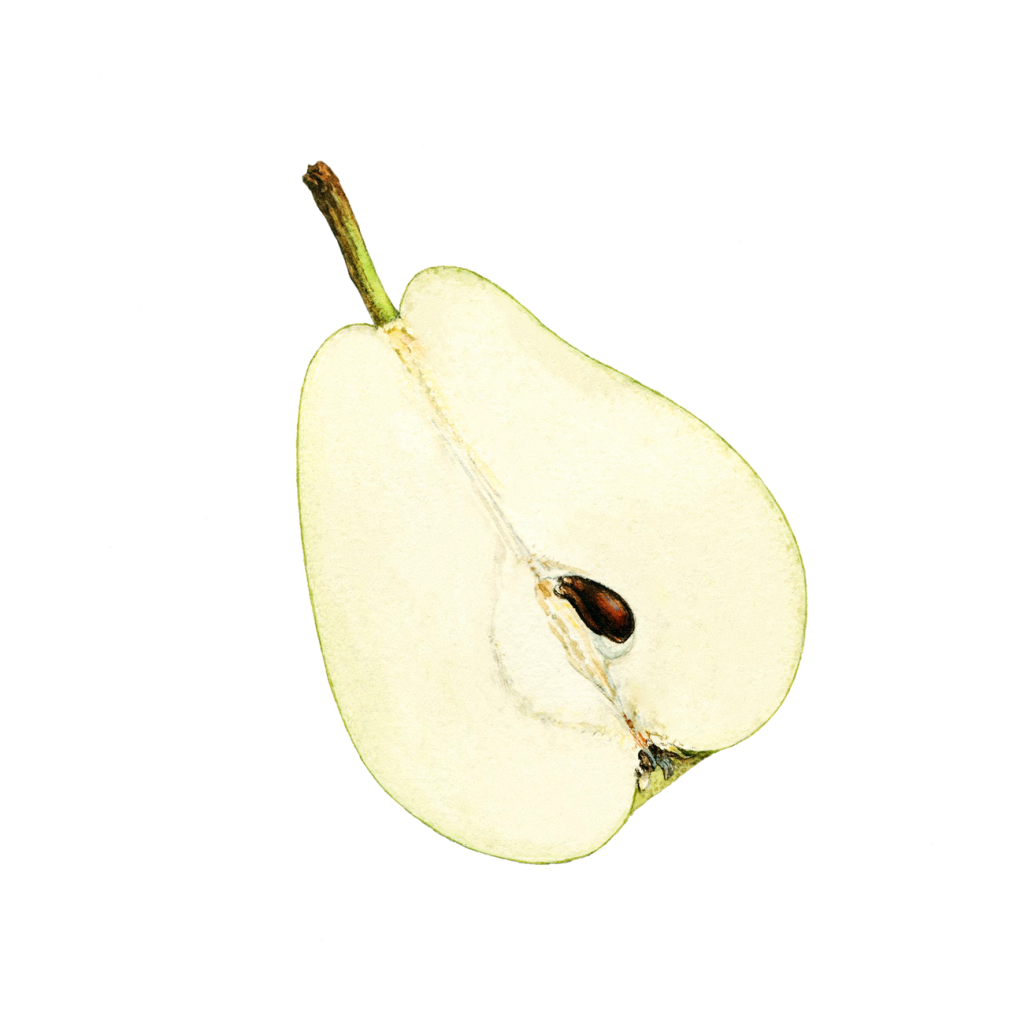Table of Contents
1 Introduction to TV Writing
Television composing could (TV Writing) be a one of a kind and energetic shape of narrating that varies altogether from movies and books. Not at all like movies, which take after a single, self-contained account bend, has TV composing included making stories that unfurl over numerous scenes or seasons. Essentially, whereas books permit for profound inner monologs and broad depictions, TV composing depends on visual narrating, exchange, and pacing to lock in watchers.

What Makes TV Composing Diverse?
TV composing is organized around time limitations, with most scenes falling inside a set runtime (e.g., 30 or 60 minutes). Scholars must adjust character improvement, plot movement, and group of onlooker’s engagement inside these limits. Also, TV offers the opportunity for long-term narrating, permitting characters and topics to advance continuously.
Serialized vs. Long winded Narrating
Television narrating regularly falls into two categories: serialized and verbose.
- Serialized narrating (e.g., Breaking Awful, Diversion of Positions of royalty) takes after an overarching plot that advances all through numerous scenes. Each scene contributes to a bigger story, making it vital for gatherings of people to observe in arrangement.
- Verbose narrating (e.g., Companions, The Simpsons) highlights self-contained scenes where clashes are presented and settled inside a single installment. These appear permit watchers to bounce in at any point without requiring broad back story information.
Understanding these crucial contrasts makes a difference trying TV journalists make compelling scripts that adjust with the medium’s interesting requests.
2 The Structure of a Television Script
Composing a TV script requires a clear understanding of designing, structure, and pacing. Not at all like highlight are movies, which take after a three-act structure in a single story, TV scripts broken into acts that fit inside time limitations, making them particular from motion picture screenplays.

Standard Script Organize
A standard TV script is designed with:
- Slug lines (Scene Headings) – Show area and time (e.g., INT. COFFEE SHOP – NIGHT)
- Scene Portrayals – Give a brief, visual depiction of what is happening in a scene.
- Discourse – Centered on the page, with character names in capitalized.
- Act Breaks – Check major shifts within the story, frequently driving to commercial breaks in organize TV.
Most TV appears taking after an act structure:
- Half-hour sitcoms (e.g., Companions) ordinarily have a three-act structure.
- One-hour dramatizations (e.g., Breaking Awful) utilize a four- or five-act structure, frequently counting a mystery or cold open sometime recently the primary act.
How TV Screenplays Contrast from Highlight Movies
Not at all like highlight are movies, which tell a total story in one script, TV scripts planned for long winded narrating. Each scene must work both as a standalone story and contribute to a bigger season bend. Furthermore, TV composing emphasizes proficient discourse and quicker pacing to keep gatherings of people locked in.
TV scripts too account for commercial breaks (in organize appears) and have more organized organizing than film scripts, which offer more adaptability in narrating. Understanding these components is pivotal for trying TV journalists.
3 Developing a Compelling Television Show Idea
Making a fruitful television appear begins with a solid, special, and seductive conception. With thousands of appears contending for consideration, standing out requires creativity, a clear prolusion, and relatable characters.
Chancing Special and seductive generalities
To produce a compelling study
- Distinguish a new take – See at being classes (drama, comedy, sic-if) and include a turn.( Illustration
- Foreigner effects mixes extraordinary gruesomeness with 80s wistfulness.)
- Tap into individual hassles – Bona fide chronicling resounds further.( Case
- Ace of None draws from Aziz An sari’s real- life hassles.)
- Consider the group of bystanders and announce patterns – Spilling stages center on binge- good stories, whereas arrange television constantly favors long winded designs.
- Make a solid idol and world – A extraordinary appear spins around compelling characters and immersive settings.( Illustration
- Breaking Bed’s Walter White — a chemistry preceptor turned rehabilitate headman — offered a one of a kind ethical struggle.)
Composing a Solid Airman Scene
The airman is pivotal it must present characters, set up the world, and snare watchers incontinently. Crucial factors incorporate
- An cinches in opening scene – Capture consideration within the to begin with many twinkles.
- Clear character alleviations – The promoter’s objects and clashes ought to be well- defined.
- Topical and tonal thickness – The airman sets solicitations for the arrangement.
- A solid finishing – Take off watchers demanding more, regularly with a thriller.
A well- written airman is the illustration for the complete arrangement. In case it’s compelling sufficient, systems or streaming stages will contribute within the show’s future.
4 Character Developments in Television Writing

Making compelling characters is the heart of incredible TV composing. Not at all like movies, where character bends unfurl in a couple of hours, TV appears permit characters to develop over different scenes or indeed seasons. Solid character advancement keeps audiences candidly contributed.
How to Form Paramount and Advancing Characters
- Deliver them clear objectives and clashes – A well-defined hero contains a solid inspiration. (Illustration:
- Tony Soprano within The Sopranos battles with adjusting family life and being a swarm boss.)
- Make them imperfect however relatable – Watchers interface more with characters who have shortcomings or individual battles. (Case:
- Michael Scott from The Office is both cringe worthy and adorable since of his frailties.)
- Create back stories – A character’s past advises their show choices and connections. (Case:
- Bo Jack Horseman’s childhood injury profoundly influences his self-destructive behavior.)
- Appear progressive alter – Advancement ought to feel characteristic and earned, not constrained or hurried.
Significance of Character Bends in Long winded and Serialized TV
- Verbose TV (e.g., sitcoms, wrongdoing dramatizations) – Characters may involvement minor development but generally reset each scene. (Illustration:
- In Brooklyn Nine-Nine, Jake Peralta develops over time, but each scene capacities autonomously.)
- Serialized TV (e.g., glory dramatizations, streaming series) – Characters advance persistently, with long-term story curves. (Case:
- Walter White in Breaking Awful changes from a mild-mannered educator to a merciless medicates lord.)
- A well-crafted character circular segment makes the group of onlookers sincerely contributed and guarantees a TV show’s longevity.
5 The Art of Writing Dialogue for Television
Dialogue in television jotting is further than just discussion it drives the story, develops characters, and keeps observers engaged. Unlike novels, where internal studies can be explained, TV relies on spoken words and illustrations to convey meaning.
ways for Natural and Engaging Dialogue
- Keep it terse – Real people do not speak in long harangues. Short, snappy lines sound more natural.( Example Aaron Serkin’s presto- paced dialogue in The West Wing *. *)
- Give each character a unique voice – A facetious operative, a nervous intern, and a confident CEO should sound different.( Example Tyron Banister’s sharp wit vs. Jon Snow’s serious tone in Game of Thrones *. *)
- Use subtext – The stylish lines say further than what’s on the face.( Example “ I’m the bone
- who knocks” from Breaking Bad implies Walter White’s full metamorphosis into Heisenberg.)
- Avoid too important shoptalk or slang – While authenticity is crucial, too important literalism can make dialogue feel messy or confusing.
Balancing Exposition with Action
- Show, do not tell – rather of explaining a character’s passions, show them through their conduct and expressions.( Example rather of saying “ I’m nervous, ” a character could twitch or avoid eye contact.)
- Weave exposition into conflict – rather of a dull word- dump, reveal back story through arguments or tense situations.( Example The opening scene of The Social Network reveals Suckers berg’s personality through a bifurcation discussion.)
- Learning television dialogue ensures that every line serves a purpose, keeping cult hooked while advancing the story naturally.
6 The Business of TV Writing
Breaking into television jotting requires further than just liar chops it’s about pitching your script effectively and understanding the cooperative nature of the assiduity.
How to Pitch Your Script to Producers and Networks
- Craft a strong logline – A one- to- two- judgment summary that captures the substance of your show.( Example” A high academy chemistry schoolteacher turns to cooking meth after being diagnosed with cancer.” – Breaking Bad *. *)
- Develop a compelling pitch sundeck – Include character breakdowns, occasion structure, and a season bow to show long- term eventuality.
- Exercise your pitch – Be terse and passionate. Directors hear hundreds of pitches, so make yours memorable by pressing what makes it unique.
- Know your request – Different networks and streaming platforms look for specific types of content. A sitcom might fit Hula or NBC, while a dark drama suits HBO or Netflix.
- Networking matters – Attending film carnivals, script competitions, and shops increases your chances of getting noticed.
Understanding pens’ Apartments and Collaboration in television
- Hierarchical structure – television jotting brigades generally include a show runner, superintendent directors, elderly pens, and inferior pens.
- Collaboration is crucial – unalike film jotting, television is largely cooperative. Pens communicate, outline occurrences, and upgrade scripts together.
- Conforming to feedback – Studio directors, directors, and directors may request rewrites, so inflexibility is pivotal.
- Spec scripts vs. original aviators – numerous pens start by writing a” spec” script (a sample occasion of an being show) to show their capability before pitching original ideas.
- Learning the business side of television jotting is just as important as creative gift — networking, pitching, and cooperation will determine your success in the assiduity.
7 Breaking Into the Television Industry
Entering the TV assiduity as a pen is largely competitive, but with continuity, networking, and strategic medication, you can land your first job.
How to Get Your First Writing Job in television
Launch with Spec Scripts & Original aviators – Writing a spec script (an occasion of a being show) and an original airman demonstrates your capability to match a show’s tone and produce new content. Numerous pens break in by submitting these to fellowships, competitions, or assiduity connections.
Apply for Fellowships & Contests – Programs like the Warner Bros. pens’ Factory, Disney ABC Writing Program, and NBC pens on the Verge help new pens get noticed. Winning or placing in major screenwriting contests (e.g., Austin Film Festival, Nichol Fellowship) can also open doors.
Come a pens’ Adjunct – numerous professional pens start as sidekicks in a pens’ room. This allows you to learn from educated professionals, gain credibility, and ultimately get a scriptwriting occasion.
Network Relentlessly – Attend film carnivals, join screenwriting groups, and connect with assiduity professionals on platforms like LinkedIn and Twitter. Numerous jobs come through word- of- mouth recommendations.
Tips from Successful Screen writers
- Rhonda Rimes (Grey’s deconstruction, reproach) “Write every day and produce the kind of show you would watch.”
- Vince Gilligan (Breaking Bad) “Be set for rejection, but keep perfecting your craft.”
- Dan Harmon (Community, Rick and Marty) “Know your characters deeply — great stories come from strong characters.”
- Breaking into television requires continuity, skill, and connections, but with the right approach, you can turn your passion into a career.
8 Common Mistakes to Avoid in TV Writing
Composing for TV could be a one of a kind make that requires adjusting narrating, pacing, and character improvement. Numerous trying TV journalists make common botches that can debilitate their scripts. Here are two key pitfalls to dodge:
1. Overwriting Scenes or Discourse
- Pointless Exchange: TV composing must be brief and visual. Numerous tenderfoots over-explain through discourse rather than utilizing activities and subtext. Watchers ought to get it a scene’s feeling and expectation without over the top composition.
- Excessively Long Scenes: Each scene ought to thrust the plot forward. Unused journalists some of the time stay as well long on a minute, overlooking that tv flourishes on pacing and energy. A great run the show of thumb is to enter a scene late and take off early—avoid dragging it out with pointless beats.
- Information Dumps: Maintain a strategic distance from having characters conversation fair to clarify backstory. Instep, uncover data actually through struggle, character intuitive, or visual narrating.
2. Overlooking Character Profundity and Appear Pacing
- Level or Inactive Characters: TV flourishes on compelling, advancing characters. On the off chance that your hero doesn’t alter over time, groups of onlookers may lose intrigued. Each character ought to have a clear inspiration, inner clashes, and a travel that spans the season.
- Destitute Pacing: Pacing is basic in TV, as scenes have strict time limitations. Unused scholars regularly make the botch of surging key minutes or extending minor subplots. Understanding where to put act breaks and cliffhangers guarantees the group of onlookers remains locked in.
By centering on solid, energetic characters and keeping scenes sharp and deliberate, you’ll be able make a well-paced, locks in TV script that stands out.
9 Conclusion: How to Succeed as a TV Writer
Breaking into TV jotting is grueling , but with fidelity, skill, and continuity, you can make a successful career. Then are crucial way to upgrade your craft and establish yourself in the assiduity
1. Refining Your Craft
- Compose Reliably: perfect way”>The most perfect way to progress is by composing each day. Make unique scripts, revamp existing ones, and analyze effective TV appears to get it their structure and pacing.
- Get Feedback: Connect a writers’ gather or seek mentorship to induce helpful feedback. Learning from others can assist you spot shortcomings and refine your narrating.
- Study Successful Scripts Read television scripts of popular shows to understand formatting, pacing, and dialogue. Websites like I Made and Script Slug offer free access to scenarios.
2. Building Industry Connections
- Network Strategically Attend assiduity events, film carnivals, and shops. Connecting with directors, pens, and directors can open doors to openings.
- Connect Cooperation’s & Competitions: Numerous systems, counting HBO, NBC, and Disney, offer TV composing partnerships that serve as passage focuses into the industry. Screenwriting competitions can moreover assist you pick up acknowledgment.
Begin as a Writer’s Right hand:
- Numerous TV journalists start as assistants in a writer’s room, learning firsthand how scripts are created and delivered. This encounter can be priceless.
- launch as a pen’s Assistant numerous television pens begin as sidekicks in a pen’s room, learning firsthand how scripts are developed and produced. This experience can be inestimable.
Coffers for Aspiring TV pens
- Books Save the Cat! Writes for television by Jamie Nash, The television pen’s Workbook by Ellen Sandler.
- Online Courses Master Class, Courser, and The Black List offer great television jotting courses.
- Screenwriting Software Use Final Draft or Caltex to format your scripts professionally.
Success in television jotting requires continuity, nonstop literacy, and networking. Keep honing your chops, make strong connections, and stay adaptable in an evolving assiduity.
read more
Best Dearness Allowance (DA) 2025: How Much Will Government Employees Get
From Self-Doubt to Self-Belief: A 21-Day Confidence Challenge
I. Introduction(A 21-Day Confidence Challenge) Have you ever felt like you’re not great sufficient, second-guessed your choices, or dreaded being judged? That annoying voice telling you “you can’t do it” — that’s self-doubt. It’s a mental barricade that discreetly disintegrates your certainty, constraining your potential in both individual and proficient life. Self-doubt influences us all…
“First Day of School 2025: Essential Tips for a Smooth Start”
I. Introduction First Day of School is more than fair a date on the calendar—it’s a new begin filled with energy, nerves, and modern openings. Whether you are a understudy, parent, or educator, how you approach this day can set the tone for the whole scholarly year. From planning school supplies to overseeing first-day butterflies,…
“Top 10 Reality Stars Who Turned Fame into Multi-Million Dollar Empires”
I. Introduction Reality TV has converted from a source of light- hearted entertainment into a global artistic miracle. Over the once two decades, reality television has given ordinary individualities and expiring personalities the limelight, turning them into ménage names overnight. But for some stars, the fame did n’t stop at the small screen it came…

The trees that are slow to grow bear the best fruit.
– Molière











Hi there! Do you use Twitter? I’d like to follow you
if that would be okay. I’m absolutely enjoying your blog and look forward to new updates.
https://www.elprogreso.es/articulo/comunicados/bingo-online-vs-casino-online-cual-es-mejor/202306151041301673597.html
Your mode of telling all in this paragraph is in fact good, all can without
difficulty know it, Thanks a lot.
ss
Thanks for finally talking about > Writing for Television 2025:
The Ultimate Insider’s Guide to Crafting Engaging
& Marketable TV Scripts" – Your thoughts are our word casino
en ligne francais
Fabulous, what a website it is! This website presents helpful facts to us,
keep it up.
https://www.eldestapeweb.com/informacion-general/online/conoces-el-mundo-de-los-casinos-en-linea–20235297240
Write more, thats all I have to say. Literally, it seems
as though you relied on the video to make your point. You clearly know
what youre talking about, why waste your intelligence on just posting
videos to your blog when you could be giving us something informative to read?
https://www.lahiguera.net/musicalia/especiales/musica_desde_francia_y_con_amor/
Howdy! I know this is kind of off topic but I was wondering if you knew where I could locate
a captcha plugin for my comment form? I’m using the same blog platform as yours and I’m having trouble finding one?
Thanks a lot!
ss
Hello would you mind letting me know which webhost
you’re utilizing? I’ve loaded your blog in 3 completely different web browsers
and I must say this blog loads a lot faster then most.
Can you recommend a good web hosting provider at a fair price?
Kudos, I appreciate it!
https://www.aufeminin.com/bienetre/4-conseils-pour-prendre-soin-de-sa-sante-physique-et-mentale-s4083062.html
I have been surfing online greater than 3 hours today, yet
I never found any fascinating article like
yours. It is pretty worth sufficient for me. Personally, if all webmasters and bloggers made just right content material
as you probably did, the web will be much more useful than ever before.
ss
Thanks for one’s marvelous posting! I really enjoyed reading it, you will
be a great author. I will be sure to bookmark your blog and will often come back someday.
I want to encourage you to continue your great writing, have a
nice morning!
https://www.planetepsg.com/croisement-football-jeux-en-ligne.html
Have you ever considered about adding a little bit more than just your
articles? I mean, what you say is valuable and all.
Nevertheless think of if you added some great images or videos to give your posts
more, “pop”! Your content is excellent but with pics and videos, this blog could definitely be
one of the greatest in its niche. Very good blog!
https://madeinfoot.ouest-france.fr/infos/article-eco-des-strategies-marketing-innovantes-dans-le-football-moderne-432839.html
Hello, I enjoy reading through your article.
I wanted to write a little comment to support you.
casino en ligne francais
I got this site from my pal who shared with me on the topic of this web site and now this time
I am browsing this web site and reading very informative articles or
reviews at this place.
casino en ligne
Every weekend i used to go to see this web page, because i want enjoyment, for the reason that this this web site conations genuinely nice funny information too.
casino en ligne France
With havin so much content and articles do you ever run into any problems of plagorism or copyright violation? My site has a lot of unique content I’ve either authored myself or outsourced but
it seems a lot of it is popping it up all over the internet without my agreement.
Do you know any methods to help reduce content from being
ripped off? I’d really appreciate it.
meilleur casino en ligne
Nice blog here! Also your website loads up very fast!
What host are you using? Can I get your affiliate link to your
host? I wish my web site loaded up as fast as yours lol
casino en ligne
It is appropriate time to make a few plans for the future and it is time to be happy.
I have learn this publish and if I may just I wish to recommend you some
interesting things or tips. Maybe you could write subsequent articles relating to this article.
I want to read more things about it!
casino en ligne
It’s awesome designed for me to have a site,
which is helpful designed for my experience. thanks admin
casino en ligne France
Hi there to every body, it’s my first pay a quick visit
of this blog; this weblog includes remarkable and genuinely excellent data for visitors.
meilleur casino en ligne
I do not know if it’s just me or if perhaps everyone else experiencing problems with your site.
It seems like some of the text in your posts are running off the screen. Can somebody else
please comment and let me know if this is happening to them too?
This could be a problem with my web browser because
I’ve had this happen before. Kudos
casino en ligne francais
Thanks very interesting blog!
casino en ligne